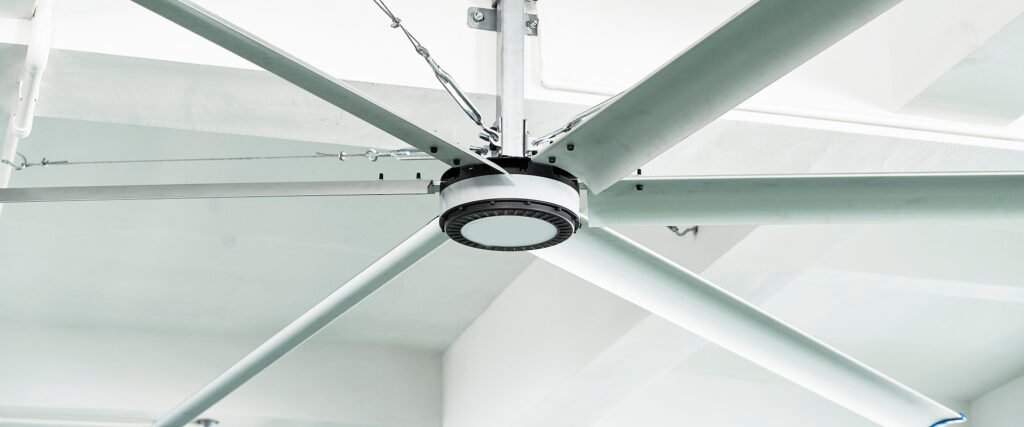
The technical knowledge related to energy consumption control in HVLS (High Volume Low Speed) fans primarily involves the following aspects:
- High-Efficiency Motor Technology: The use of high-efficiency motor technology is key to controlling energy consumption in HVLS fans. Permanent Magnet Synchronous Motor (PMSM) technology is widely used in HVLS fans due to its high efficiency and power density, which significantly reduces energy consumption compared to traditional motors.
- Blade Design: Innovative blade designs improve aerodynamic efficiency by optimizing the shape and size of the blades, enabling the generation of greater airflow with the same energy input, thus achieving energy savings.
- Vector Control Technology: Vector control technology allows for precise control of the motor’s speed and torque, enhancing the system’s response and control accuracy, and reducing energy loss.
- System Integration: Through system integration techniques, various components such as motors, blades, and control systems are efficiently combined to achieve overall energy efficiency optimization.
- Intelligent Control Systems: HVLS fans are equipped with intelligent control systems that can automatically adjust the fan’s operating status based on environmental conditions and user demands, preventing unnecessary energy consumption.
- Safety Design: In the design process, safety considerations are paramount to ensure that energy control is achieved without compromising safety.
- R&D Investment: Continued investment in research and development helps to drive the application of new technologies and the iterative improvement of products, further reducing the energy consumption of HVLS fans.
- Market Recognition: Companies like Air21xx, through their independently developed permanent magnet synchronous motor HVLS fans, have gained market recognition in various fields, demonstrating the advantages of energy control with their technological feasibility in large airflow and miniaturization.
- Policies and Standards: Compliance with relevant energy efficiency standards and policies, such as China’s energy-saving product certification, can guide HVLS fan manufacturers to improve the energy efficiency ratio of their products and reduce energy consumption.
- Technical Trends: The unique business models and technological level trends in the industry indicate that HVLS fan manufacturers are moving towards more efficient and energy-saving development, continuously innovating to reduce energy consumption.
In summary, the technical knowledge related to energy consumption control in HVLS fans encompasses various aspects such as motor technology, blade design, control systems, intelligent control, safety design, and more. The integrated application of these technologies can effectively reduce the energy consumption of HVLS fans, achieving an environmentally friendly and energy-saving ventilation and cooling effect.
